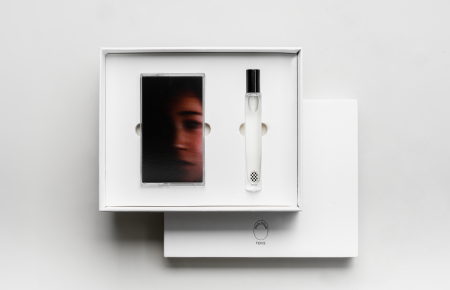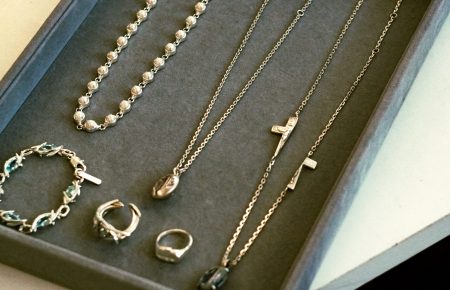At MAEKAN, the story defines the medium. Some stories function best as written text, others hope to capture the emotion through an intimate audio experience. In cases such as this audio story, the transcripts we provide are edited or done to the best of our ability through AI transcription services and human transcribers then edited for clarity and length. We try our best, but this may contain small errors or non-traditional sentence structure. The imperfection of humans is what makes us perfect.
Derick: No, I’m —
Eugene: you’re nervous, bro.
Derick: I’m not. I’m just thinking. I’m just thinking about how much, how long I can speak about these t-shirts for, dude. I’m really not scared. I promise.
Eugene Kan: You’re a little bit.
Derick: I’m not.
Eugene (VO): Over the last year or so. We’ve been consciously looking at the way MAEKAN looks, feels, and how you engage with it. Since the beginning, we haven’t done much in the form of a brand refresh. But as time goes on, you realize that brand takes on certain human characteristics. It learns about new ideas and leverages experiences to become this living, breathing thing.
While our home page has changed a few times MAEKAN’s core tenant, our logo, hasn’t changed. When we set off on launching an online store and creating products, we wanted to try out a few new things. It didn’t take much deliberation before we tapped our good friend, Derick van Wijk to head up our first graphics. His work is in many ways, a step in a new and arguably less rigid direction for us as we applied the graphics on a series of t-shirts.
The humble t-shirt has long been a canvas for messaging, thanks to its accessibility. And we’re excited to see it brings some of MAEKAN’s digital meaning into a physical world. We spoke to Derick about his story of coming to Hong Kong, his process, and how we approach these first graphics from MAEKAN.
If you’re interested in purchasing a MAEKAN t-shirt, they’re available now at MAEKAN.com/shop. Enjoy!
What is going on, Derick. How are you?
Derick: What’s up Eugene. I’m good, and you?
Eugene: Great.
Derick: Good.
Eugene: So before we kick things off, I just wanted to shoot from the hip and give you a little bit of breakdown on Derick — who I have beside me here — who is someone that you could say is pretty close to the MAEKAN fam.
It’s somebody that — we haven’t even really known each other that long. Maybe like three, four years?
Derick: Couple years, maybe three years now.
Eugene: I do remember the first time I met you, though. I was on the subway with Arthur Bray.
Derick: Oh, true. That’s right.
Eugene: It’s interesting ’cause we met almost in the context of a social setting. And then as we got to know each other, we ended up working on projects together. Derick and I used to grab dinner just the two of us ’cause we used to live pretty much down the street from one another. And the one thing that I always really appreciated about Derick was his point of view on everything he did as in I think there was a lot of thought process behind. I think it actually aligned quite well with a lot of things that we thought about. Like a lot of things that we did at MAEKAN often had a story or narrative that we felt was necessary to flesh out. And I think that’s something that we would align with. But, having said that, how would you describe yourself in terms of the work you do or the work you want to be known for?
Derick: Tough. Just a bit of context: I’m half South-African and half Dutch-German, but I grew up in the Middle East. So I went to a lot of different schools growing up, a lot of different countries: Dubai, Saudi Arabia, Bahrain, Abu Dhabi. And I think moving around gave me quite an interesting perspective, just soaking in information, whether it was visuals or audio, whatever. So growing up in all these different environments was really interesting when I graduated and I got into studying and stuff, it got to a point where it was a distillation of all these years that I had gone through.
So I think when I work and I apply stuff, all the stuff that I do is all derivative of memories or things that I remember but then also contexualized in a contemporary world. I try to do things intentionally. All the stuff that I do is based on systems. All these kinds of systems need to have a function and they need to work, but then I also try to, run it back to a human feeling and give everything a human face and a memory and a feeling.
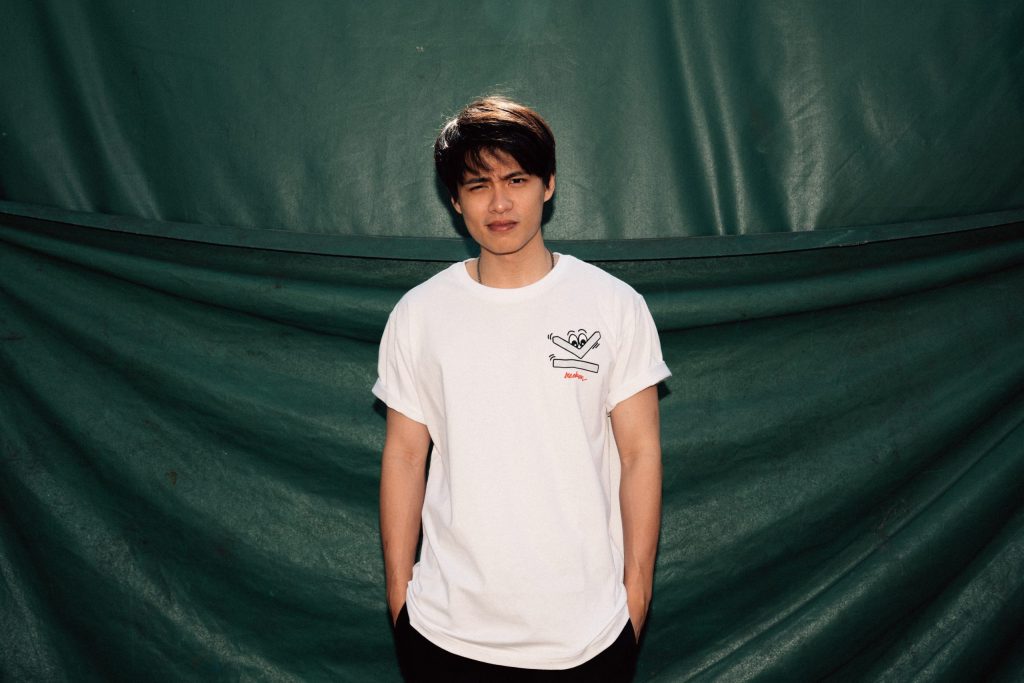
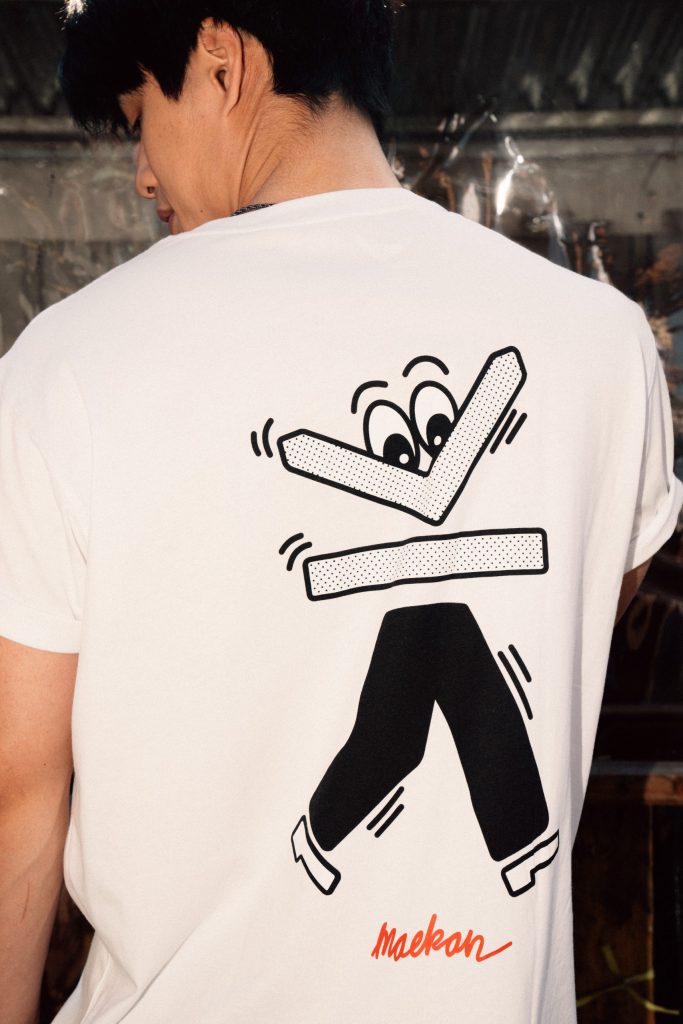
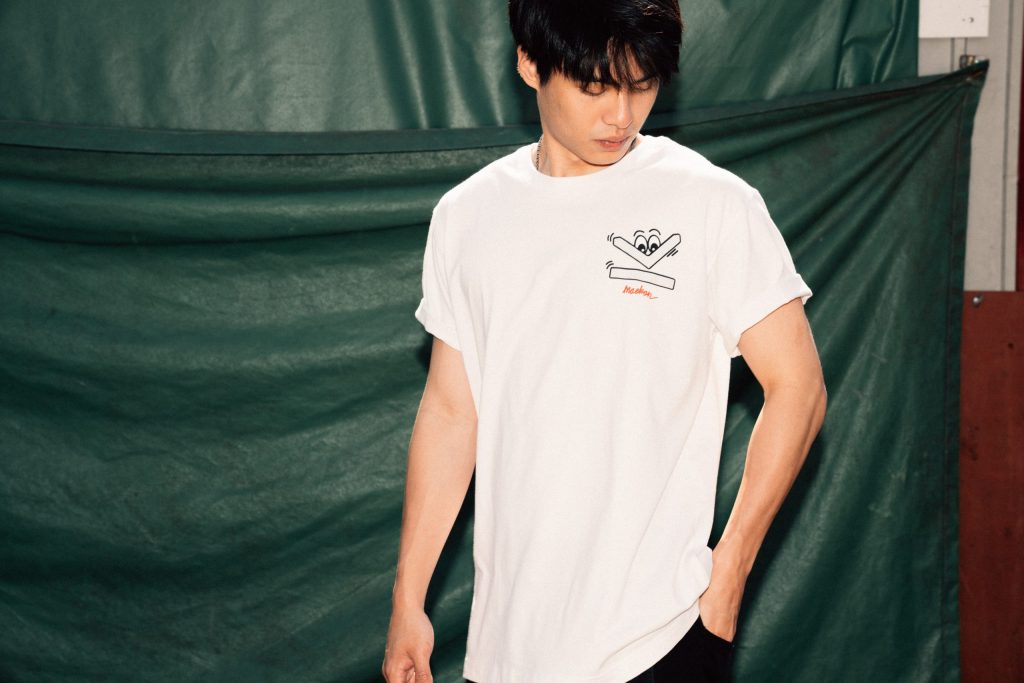
Eugene: In terms of creating a more human layer to what you do, how would you describe that? What is the two sides of it? What is something that’s very sterile, almost overly functional on one side. And what’s the one side that’s more humanistic and imperfect?
Derick: Well, of course you have the surface level stuff, So that can be color and like, typography and audio and stuff like that, but I think adding a human face to things is face —
Eugene: Do you mean a literal human face, or you mean?
Derick: No, definitely not a literal human face, but basically adding a human feeling to it. So basically that includes the audience and the piece of communication or the piece of artwork that you’re doing whether it be unearthing a memory or creating an association, you’re creating a dialogue with the audience, which is interesting because if you’re talking at them, it, there’s no two-way street. But if you add a human element, they’re able to add their own perspective on top of the piece of communicational art that you’ve made
So it’s getting them involved, which I think a cool thing.
Eugene: And I want to touch a little bit upon your upbringing and obviously the ability to interact with so many different cultures, undoubtedly has an impact on your work. And that, to a degree, is some ways travel-related because I think that having the ability to travel and see different places will definitely contribute to how you see the world. How would you say that those early moments created a foundation for how both you saw the world and how you want it to interact with new learnings? Because you’re going to each new culture, you’re probably having to figure out what the social code is et cetera. Are there things that you’ve learned that you’ve applied now?
Derick: It’s super layered. Growing up our friend groups where we had friends from Sudan, Sweden, Pakistan, Morocco. From all over the place. It was this ragtag group of kids. And we would just basically skate all day. At nighttime, we’d get up to no good. Or we just hang out together. It was like really unique bonds formed between all these different kids. Because everyone’s from everywhere, you get to spend time in their houses and meet their parents and, eat the food of the place where they’re from. So there was a big cultural exchange, right from the beginning. It wasn’t like I lived in a town or a city where it was just like one type of person. It was really just a ragtag group of people.
That influenced me a lot. But then also beyond human interaction, it was like place in space as well. And when I say that, I mean the Middle East, it’s a wild place. When I lived there, there were going through a big come up economically. They started to build economies away from oil, so they were dipping more into like culture and stuff like that. So I started to see the beginning of that. I think pin it to when I lived in Abu Dhabi, which is like an Arabic New York. I don’t know if that really makes sense. But as a young kid just moved there, I went to the American International School of Abu Dhabi. I went to EISA. I was about 12-13. I would just take cabs around the city, go to souks (markets), where there would be all these ceramics, metal goods, carpets, electronics.
Eugene: A market?
Derick: A hundred percent. A souk is a market. Just taking all of that in, and I didn’t really know like how to process it or what to think about it when I was experiencing it because you’re just like, “this is where I live now. I have to make do.” But it was all a pleasant experience and you adjust, but it was like an absolute sponge taking in all this different stuff. Smells, sights, signage, the way people interact with each other. And I was just making my way through those situations in a very quiet way, just sponging everything up and I’ve made it a lot of good, really great friends along the way who I’m still in touch with now.
Eugene: You can always say that travel has a big impact on what inspires you and the stuff you create. So how has it been most recently with the inability to travel? Have you had to look elsewhere for inspiration or has it just been a slog?
Derick: I’d be lying if I said there were times where it was in a slog. I was listening to this podcast the other day and he made a point which totally resonated with me, which was basically like, “traveling fills up your tank.”
And while I’m aware that not everyone can travel and it is a privilege and it’s a luxury, when work does take you to other places, it teaches you to re-frame what you do in the context of the markets over there and the way that people practice over there.
And whenever I do take a trip or travel, it’s a great reminder of like how globalized things have become, and also just meeting people from different practices, whether it be photographers, writers or DJs, or even people who work in industrial design and more technical kinds of sides of design and art and stuff. I think just meeting different people from different spots and figuring out how they do it that’s super interesting. So I’d say, yeah, it’s of course taken a bit of a toll, but I have regular communication with all my friends and all my partners in different spots. But I can’t wait to obviously get out again, but it’s the same with everyone.
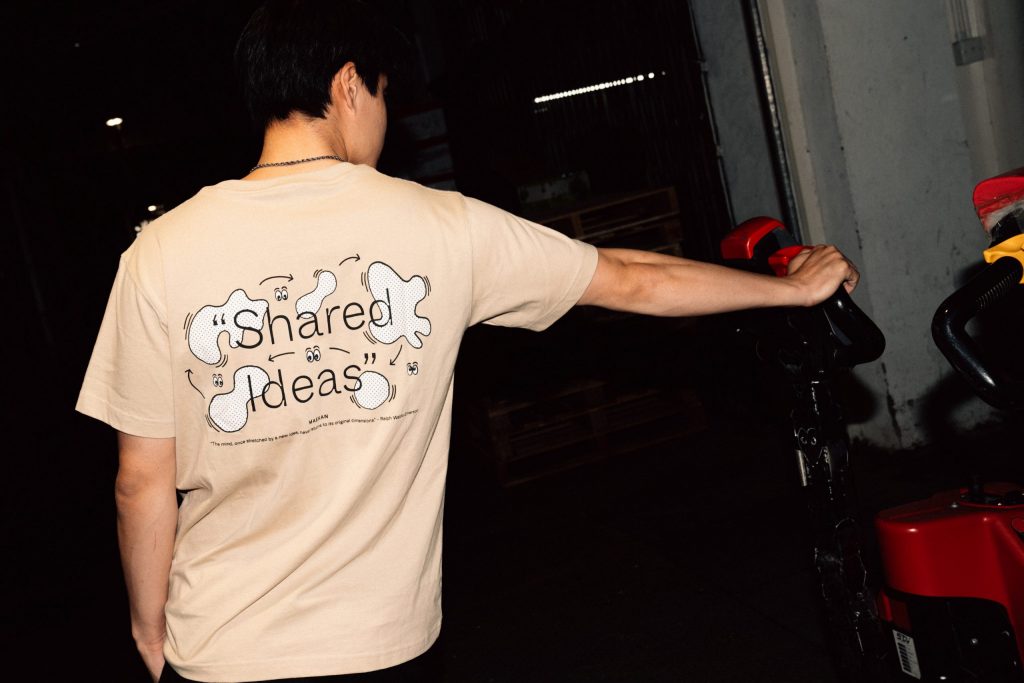
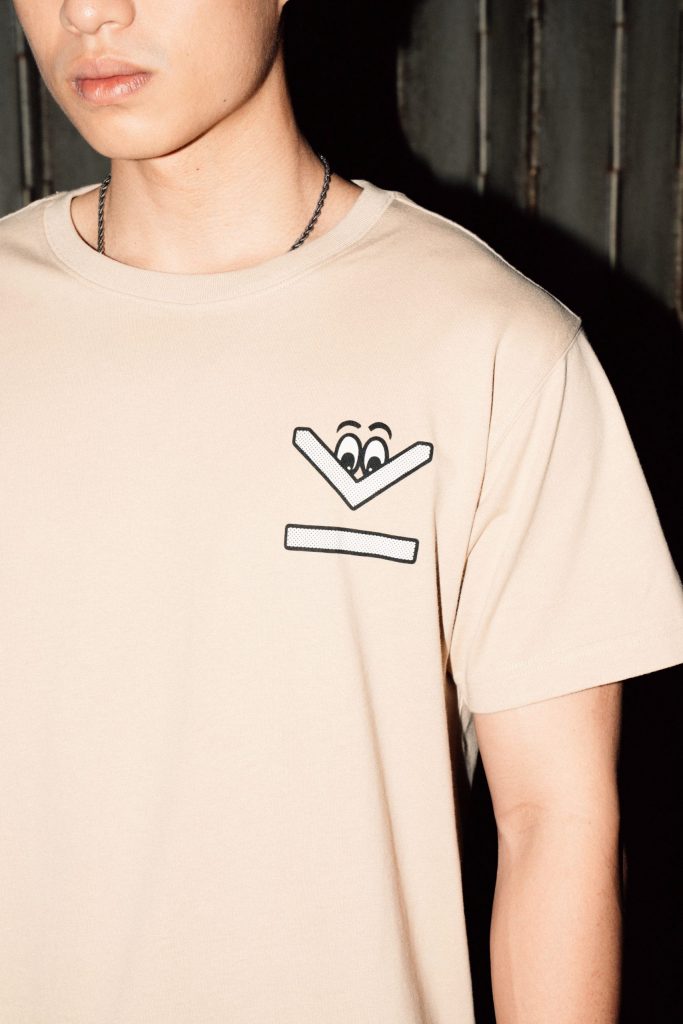
— Derick van Wijk, on the re-design of our logo for the new tees.
Eugene: How did you end up in Hong Kong and did a lot of your early foundational years make an integration to Hong Kong a little bit easier? Because I think that melting pot of cultures that you were so accustomed to is very much akin to what’s going on in Hong Kong. Like, you and I grew up very differently. I grew up in a small town in Canada. You grew up in the Middle East, and here we are sharing this conversation.
Derick: For sure. I think in a lot of people that live in Hong Kong, I see the same person as I am in that context. It’s a real melting pot of people. You hear that all the time, but it really is just a mixed bag of people and people who can acclimatize here can acclimatize almost anywhere. And the same can be said about me: arriving here was quite easy, Actually. What did bring me here was just to rattle the cage a little bit ‘cause I spent some time in Europe, I lived in London for four years. and then I went to Cape Town and South Africa for three and a half years doing book design, which is where I cut my teeth designing in the industry, and I just decided to come through to Hong Kong.
Eugene: Did you know anybody?
Derick: I know a couple of friends. Shout out Starcrossed Tattoo, a really great shop. Some really good friends of mine. They lived here at the time, so I just chatted to them about the city and they were like, “come through. It’s going to be great.” So I’ve been here four years now.
Eugene: Wow. It’s been a minute then.
Derick: Time flies in the city.
Eugene: And then in light of the process in which you create, how do you establish your perspective and your approach when both trying to impart your own aesthetic into something and your own style relative to people you’re working on a project with?
Derick: One thing I’ve learned in the past two — no three years — is to listen a lot more. So basically when I work with clients in the beginning stage, I allow a great deal of space for the client to really gather their thoughts into communicate what they want. What they’re after our job as people who work as creatives in a commercial is to help contextualize a business into a brand, right? So that’s through visuals, photographs, image, treatment, all that stuff. So I guess like the answer would be allowing a lot of space in the beginning process. Through time, you learn what questions to ask to get more information from the client and figure out what you need.
A big thing is listening in the beginning. That’s a huge thing. Just taking time and space, but then I think beyond that, of course I’m going to insert my own perspective in quite a confident way, because that’s just how I work. I don’t really like to tiptoe around or give a whole bunch of options. I think about something very clearly and intentionally and then I come up with the best solution that’s framed in the context of my creative expression. And then I communicate that and then I let them know why that’s the best option and then we have a dialogue and a back and forth. So there’s a bit of tension, lack of tension and just open dialogue. That’s a good thing between clients, I think, to have.
Eugene: That question that I just asked is a setup for this next question. Could you explain a little bit about your design process behind the two designs, maybe starting with the MAEKAN Moves graphics?
Derick: Sure! So we had a whole bunch of different drafts. We just brought it down to two designs. The first one, the MAEKAN Moves was cool and interesting for me to put together because it’s a remix of the logo. So the main logo is like, really pixel perfect, designed to grid, which is awesome. But wanted to flip it a little bit and turn it into a mascot.
Eugene: One thing that we really wanted to do on our end was to add a little bit of fun-ness and a personification to MAEKAN. Because as we touched upon earlier, there’s layer of seriousness that I don’t think has necessarily reflected who we are as people and who we want and how we want the brand to be perceived, to be honest. So this was almost a first step forward in — I don’t know what the right word for it.
Derick: It’s just re-contextualizing.
Eugene: Exactly. It’s like, we can talk about serious shit, but at the same time, it doesn’t need to be that serious. It should be approachable.

Derick: Yeah. “It’s okay to relax and have fun,” right? I think that was a big thing for us. When we approached this, the big thing for us was to have fun and just make things a bit more friendlier, but we didn’t really set out with that goal specifically. We just wanted to have a graphic exercise, which is really cool. So we had a whole bunch of different designs. We narrowed it down to two, the first one MAEKAN Moves, is basically just a remix of the logo. As everyone knows, the MAEKAN logo is designed pixel perfect to the grid, basically. I just remixed it a little bit. I slanted the top element of the design, added some legs and a body and just had fun with it. And that was informed by this visual graphic culture that Japan has that I’d seen in some of the earlier, Popeye magazines from the seventies and eighties. I found that a lot of the services and products had mascot characters, which is really cool and friendly, and it was just pleasant to go through the document with that.
It wasn’t too serious. So it was just a remix of the current MAEKAN logo, give it a bit of a mascot. And then the other one, also another friendly design. I think that you guys, do a really great job of connecting people from different industries, like through commercial creative jobs, but then also through conferences. So I wanted to show different ideas, represented by different abstract shapes, which is different industries and different roles and cultures all coming together in one space and interacting with each other, which is, I think a big thing that MAEKAN does is connecting people and industries and stuff. Having a little showing that in a fun way pleasant to put together.
Eugene: Yeah, and I think both of them were super on brand for us. Even though we’d never really gone through this exercise of removing that layer of seriousness. This was to us, something that feels good when you just look at it, you’re like, “oh yeah, I didn’t know what I wanted. I roughly knew what I wanted, but this actually was a great visual representation of that.”
Derick: For sure. And it doesn’t need to end there. I think this is like a new culture of branding within industries, where it’s almost less rigid. And it’s almost like when I put brands together now as well: I purposely make my brand guides for the client a little bit less strict. I’m not like here to slap you on the wrist every time you use like a color wrong or something. I think it’s cool for people to explore things. And then once I hand the product over, it’s yours and you can do whatever you want with it. I think that flexibility is a cool thing because brands can take more ownership of the way that they want to express themselves.
Obviously there’s heinous examples of where it can go wrong, but of course I could trust you guys to go with that. I think it’s cool to allow room for growth with a business. So MAEKAN’s still exactly what it was with all those great traits, but at the same time, it’s expanding and showing that it can be fun and I’m sure there’s going to be a lot more of that stuff in the future.
Eugene: Yeah. For us, it’s definitely a new chapter to be opened, especially because we’re also going to product and then we’d never done it before. And there’s something you said earlier that really resonated with everything that we see happening before us as a brand as MAEKAN and that was about how maybe something didn’t take a lot of time to do, but it didn’t necessarily devalue the impact of it. I think that you might’ve said that, off-air or previously, but basically just ‘cause I spent five minutes doing something and it’s not necessarily something that took me five hours or five days to do, it doesn’t necessarily mean that it’s any less relevant or less good. And I think that’s something that we, sometimes we get caught up in is “hey, you know what? There’s something that needs to be extra polished before it can be showed what the rest of the world.”
And I think that in some ways is a by-product of doing client work because you’re always like, “oh, you know what? There’s a very definitive relationship here where sometimes it’s equating time to money.” Not always, but yeah, I think there’s something there that needs to be said about unlearning that process.
Derick: We wanted it to be worn by everyone, young, old male, female, otherwise it’s just it’s something that anyone can put on. We didn’t want it to be too masculine. Or too sick. You know what I mean? It’s something that you can throw in on a Sunday and go shopping in, but you can also wear it out for a drink. But again, we weren’t trying to reinvent the wheel. It’s a casual tee with a really friendly graphic on the back of it. I think that was the driving thing behind the final decisions that we made.
Eugene: Because a lot of the things that we talk about, whether it’s, Making It Up or just in general, there’s these invisible forces that govern a lot of things that we do or that are subtly influencing us. And it’s aligning all those things to create this experience everything is in such great alignment that nothing sticks out.






“MAEKAN Moves” Tee
We couldn’t resist including one pun in the names of our store launch products. Our sincere wish for you and yours: that you’re seeing progress in your plans and moving in the direction you want to be headed.
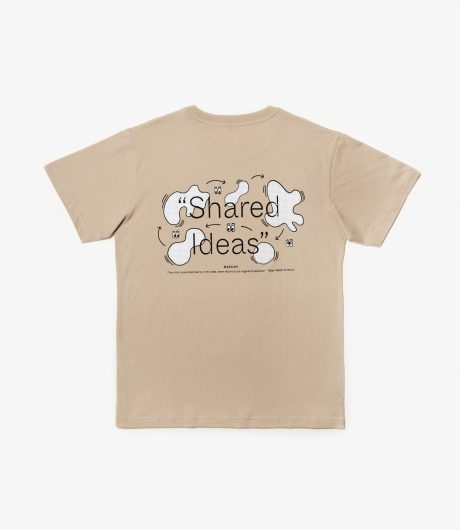
“Shared Ideas” Tee
Ideas are better shared. Okay, so not absolutely every thought needs to be broadcast to the world at all hours, but we continue to be champions of being as honest as possible about creative process, inspiration, and results. The more ideas you encounter and exchange, the more you grow.


